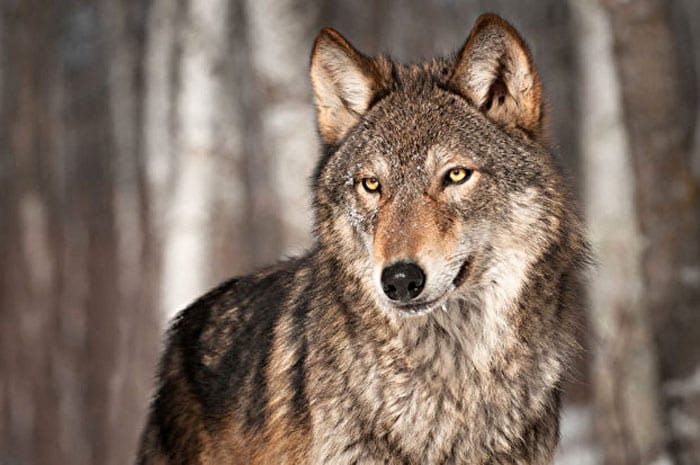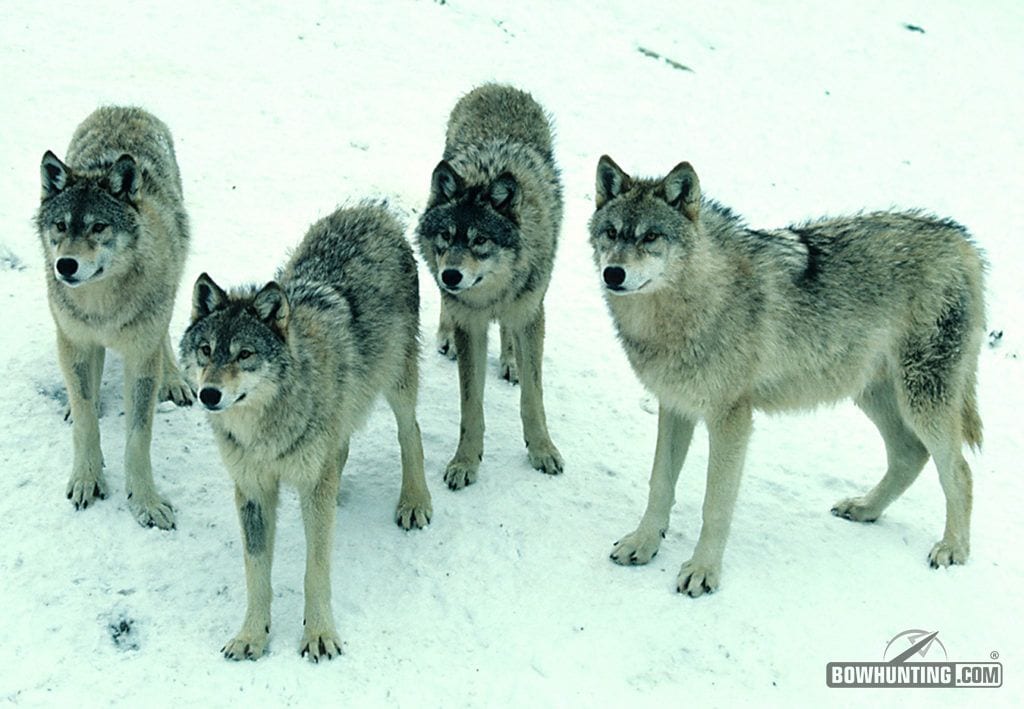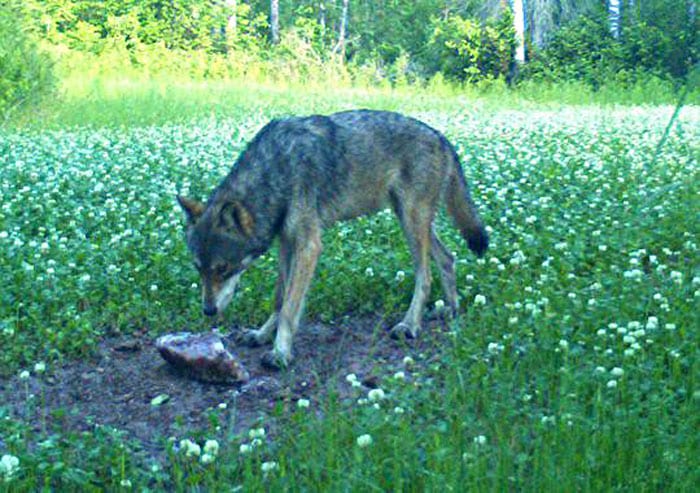Will a WI wolf hearing finally make a difference?
One can’t help but clap, hoot and holler “You tell ’em, Tom!” when reading Wisconsin state Sen. Tom Tiffany’s press releases about some insult or outrage he deems worthy of a response.

Wolves must be managed. Other states across the country are experiencing the effects of what happens when wolf populations grow out of control.
Currently, Hazelhurst, Wisconsin’s favorite demagogue is mad that “the wolf population is being allowed to run rampant in Wisconsin.” That’s why the headline on his recent press release – issued jointly with state Rep. Adam Jarchow, R-Balsam Lake, Wis. – shouted, “Enough is Enough.”
Their announced solution is a “Great Lakes Wolf Summit” in September, which will “send a crystal-clear, grassroots message that it’s irresponsible to ignore this issue any longer.”
Cool. What could be more “grassroots” than a meeting run by two lawmakers, and what could be more “crystal clear” than sending a message to a person or agency not identified?
I know. Details, details.
Anyway, Tiffany and Jarchow also announced that their summit will be Sept. 15 from 9 a.m. to 3 p.m. at the Das Lach Haus in Cumberland. They opened registration July 20.
But the lawmakers seemingly lost some of their fury the past two months. Their recent press release was merely two paragraphs and ended weakly: “Our goal remains to have a policy-driven discussion about the situation at hand.”
Yawn. Who’d drive to Cumberland for that? I mean, Cumberland is three hours from Eagle River, 4.5 hours from Marinette and about 100 minutes from Superior. Maybe Tiffany should dust off “Enough is Enough” from that earlier press release and add three exclamation points. He could also recycle this line: “Let us be clear: Wisconsin is not a wolf sanctuary and it’s irresponsible to allow it to be treated as such.”
And just so we’re clear, I agree with Tiffany and Jarchow that Wisconsin proved from 2012 through 2014 that it can responsibly manage its wolf population. It’s ridiculous that Great Lakes wolves are back on the Endangered Species List nine years after the U.S. Fish and Wildlife Service first delisted them, especially with the minimum population nearing a record 900 animals and 222 packs.

Wisconsin’s minimum wolf population was recently estimated at nearly 900. Herb Lange photo courtesy of Wisconsin DNR.
The current relisting began in December 2014 under court order, marking the fourth time that lawyers, not biologists, reinstated federal protection for the region’s wolves after the original delisting in 2007.
But will yet another wolf meeting hasten the F&WS’s ongoing appeal of this current relisting? Or will calling it a “summit” inspire Capitol Hill to permanently remove federal protections and let the Wisconsin Department of Natural Resources resume management duties?
Granted, we’re talking wolves, which likely generate more controversy than all other wildlife species combined worldwide. Still, it’s unlikely Tiffany and Jarchow’s invited “experts in the field” or six hours of testimony from weary travelers will provide any new insights for federal courts and Washington insiders.
But perhaps Tiffany can detail the actual impact of a “wolf population being allowed to run rampant.” Or is this just more of his routine exaggerations? According to DNR data on agriculture abatement for wildlife-inflicted damage, wolves accounted for 6 percent of Wisconsin’s $1.24 million in payments during 2014, the most recent year in which those totals are available.

Wolf damage accounted for 6 percent of Wisconsin’s $1.24 million in agriculture abatement payments in 2014. Photo courtesy of Cuddeback Scouting Cameras.
If Tiffany and Jarchow want to target more costly consumers of crops and livestock, they should attack white-tailed deer, which caused 73 percent of Wisconsin’s 2014 abatement bill. And heck, don’t forget about black bears, 12 percent; or Canada geese, 8 percent.
And if we’re going to reimburse people for wolf-killed pets, hunting dogs, sheep, calves, horses, llamas, emus and other livestock, why stop there? To be fair, we should also compensate folks when a coyote or bobcat kills their cat or dog; or a fox, weasel, hawk, owl or raccoon kills their rabbit, chicken or other barnyard fowl.
And speaking of wolf-killed dogs, maybe the summit should address whether Wisconsin could save some hounds by shortening our bear-baiting season. Depending on the year, our bear hunters lose two to seven times more hounds than their counterparts in Michigan’s Upper Peninsula, according to a 2013 study by Joseph Bump at Michigan Technological University in Houghton.
The most obvious difference is that Wisconsin allows bear baiting from April 15 through the end of bear season in mid-October, which covers most of the time they aren’t hibernating. That’s the United States’ longest bear-baiting season. Michigan is next longest, but it doesn’t allow baiting until 31 days before its bear-hunting season, or roughly mid-August.
The longer a bait site is active, the greater the chance wolves discover its pull on prey. As Bump notes: “The extended, pre-training baiting period in Wisconsin provides wolves increased opportunity to discover and defend bait sites. This (is) based on observations of wolves using bait sites for food as documented by cameras, tracks, and the stomach contents of a captured wolf. Bear hunters using dogs frequently start their dogs at bait sites, and it seems reasonable to expect that dogs in Wisconsin would be more likely to encounter wolves that are in the proximity of and potentially defensive of bait sites.”
Therefore, instead of having some vague “policy-driven discussion” as the summit’s goal, perhaps Tiffany and Jarchow should get specific. Do they want more deer in the Northwoods, which is mostly a function of habitat and winter severity; or do they want fewer wolf-killed hounds, sheep and calves?
Then again, maybe they simply want to cap the wolf population at 350, 500, 1,000 or some other number determined by a show of hands. If so, why make wolves the exception in Wisconsin’s current approach to managing large wildlife?
We no longer target specific population goals for deer or bears. With deer we simply ask if a county’s herd should go up, down or stay the same. And with bears, we’re content to hold them at roughly 30,000, which is 18,700 more than the longtime goal of 11,300.
And if Tiffany and Jarchow think deer management is all about predator management, then why ignore bears? Recent DNR studies in northwestern Wisconsin linked bears to nine (20 percent) of the 46 radio-collared fawns killed by predators in spring and summer from 2011 to 2013. Further, bobcats were linked to six (13 percent) of the dead fawns, coyotes to five (11 percent), and wolves to one (2 percent); but 17 (37 percent) couldn’t be tied to a specific predator based on evidence at the death site.
For those reasons and more, expect the Tiffany-Jarchow wolf summit to simply restate best guesses and half-baked assumptions. But shouting them more loudly won’t make them true.

 By
By 



